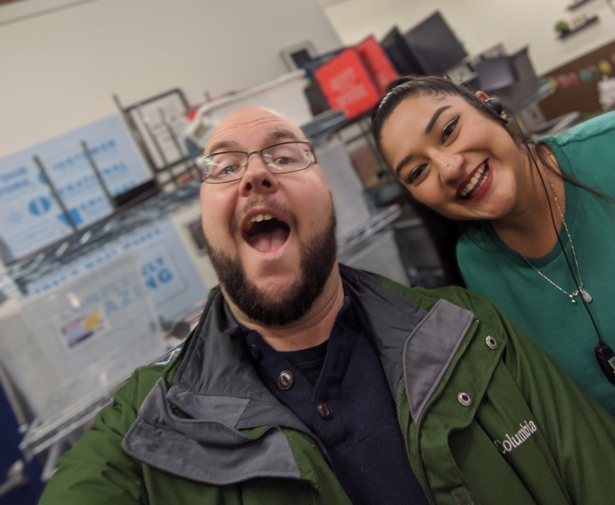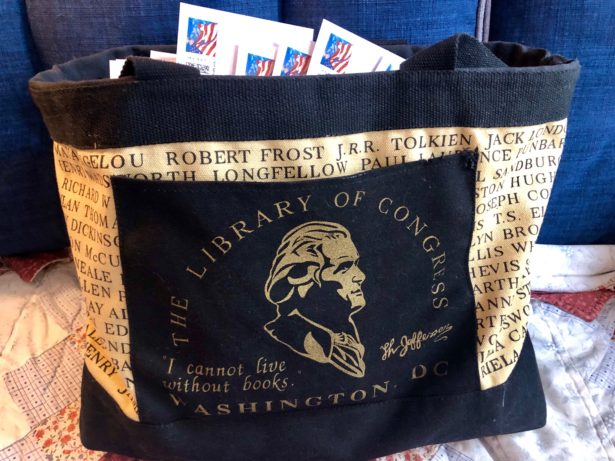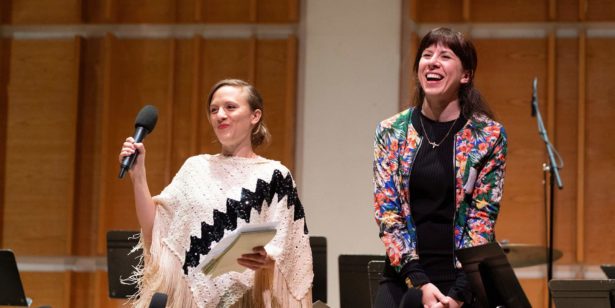
Giving New Voice To Older Writers
A writing program helps the elderly tell their stories
When she lived in Portland, Oregon, writer Lisa Galloway had the opportunity to help the dying tell their stories. At the Kaiser Permanente healthcare organization, she found herself doing “video ethnographies” as part of a change-management initiative. “What I was doing was interviewing people who were end-of-life,” she said. “Part of what Kaiser was curious about was how to improve their care. But what really happened was that I spent a couple of hours with these people and they were telling me their stories.”
When she moved to San Francisco in 2016, it did not take her long to find a way to find a way to put that experience to use. “I have a creative writing background, and I love being able to give people a forum to tell their story in their own words,” Galloway told Good Turns recently. Galloway’s work as a grantwriter for annual San Francisco literary festival Litquake, and as a grants administrator at the Disability Communications Fund, put her in the perfect position to launch the writing program she had in mind. With a small grant from the California Arts Council, the Litquake Elder Project was born.
“There are often classes where there are a lot of tears, and the power in that is beautiful”
The Project brings an eight-week writing class to senior living communities and other locations around the Bay Area. “It’s like a writing workshop,” Galloway says. “We do a lot of different things. One of the teachers brought in rosemary to conjure memory and they wrote letters. We use photos, music, other techniques to encourage creative writing. Then everyone shares what they’ve written in class, either in that class or at the beginning of the next one.”
As in any class for new writers, reading their work in class can sometimes put people off, and the elderly are no different, Galloway reports. “There are usually somewhere between eight and twelve people in the class,” she says. “It starts bigger, but people are like, Woah, sharing, ahh! It usually whittles down to a solid ten.”
The writing that does come out of the classes is sometimes difficult to elicit, and sometimes profound. “I thought, in the design of it, Oh, I’m creating a community of writers. I just didn’t know what would happen. The thing that really happened for me was just watching the students in the class build their own community and start voicing their stories,” Galloway says. “I got to see them encourage one another, and start to tell stories they would admit, ‘I’ve never said this out loud before.’ One of the residents wrote her #MeToo story for the first time and that blew us all away. There are often classes where there are a lot of tears, and the power in that is beautiful.”
The students have ranged in age from 65 to 90, Galloway says. For those who can communicate only verbally but may not have the eyesight or muscle control to write, or suffer from another disability, the Elder Project provides audio recorders. The program intern will transcribe the work, and then bring it to class and sometimes even read it for the student, Galloway says.
Galloway, who is also development director for Foglifter Journal, receives a small stipend for her work, as do the intern and four “teaching artists” who are the Elder Project’s staff, but no one works on the project full time, and the stipends hardly provide anything like a living wage. Galloway and her fellow teachers do the work mostly as a good turn. “They’re all in it because their hearts are in it,” Galloway says. “That said, they’re highly qualified. All of the teachers are published, they all have at least one book, and they all have at least some kind of teaching experience in their background. They’re doing it for a little bit of money out of the kindness of their hearts.”
“The teachers are also representative of each generation, 30s through 60s,” Galloway says. “I like to think that each of them brings the strengths of their approach and writing style. The age makes a difference in how they connect and what they bring out. The intergenerational nature of it is important.”
At the end of the class, the students do a reading that is often open to the public, and an anthology of their work is put together by the Elder Project for friends and relatives to take home. “The goal is for people to voice their story,” Galloway says. “With the anthologies and the reading I like to see them feel proud enough to share their work and get feedback.” As Galloway should feel proud of what she’s created in San Francisco. The feedback from Good Turns is unreservedly positive.
(Photo courtesy of Flickr user Marjan Lazarevski)
Posted August 24, 2018





